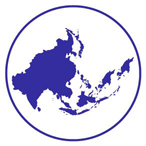Presentation Title
Location
RCC Demo Room
Start Date
12-10-2013 11:00 AM
End Date
12-10-2013 12:30 PM
Abstract
Taiwan’s painters were dynamic contributors to a revolution in color that dramatically reshaped East Asian art. During the early twentieth century, new techniques of on-site sketching and the introduction of oil paint shook the foundations of Chinese and Japanese ink painting as it had been practiced for centuries. The Japanese colonization of Taiwan, a period when educators such as Ishikawa systematically introduced European painting methods, produced a cohort of painters in Taiwan professionally trained and committed to watercolor and oil painting. Building on international art trends like Impressionism and Fauvism, these painters developed a sense of color distinctly their own. Influences from ink painting, local geography, temple architecture, and folk customs shaped the ways in which this Taiwan school of painting conceptualized and applied color.
Painters who moved from China to Taiwan after 1949, like Chang Dai-ch’ien and Liang Dan-Fong, remained more closely wedded to Chinese traditions. They saw themselves as the proud ambassadors of a resilient art form centered on brushwork practice. Their ability to travel internationally did not persuade them to adopt Western approaches. It confirmed their determination to modernize Chinese painting from within. They boldly experimented with color without consciously borrowing anything from the West.
Included in
Asian Art and Architecture Commons, Chinese Studies Commons, Fine Arts Commons, Modern Art and Architecture Commons
Painting Taiwan's Modern Identity
RCC Demo Room
Taiwan’s painters were dynamic contributors to a revolution in color that dramatically reshaped East Asian art. During the early twentieth century, new techniques of on-site sketching and the introduction of oil paint shook the foundations of Chinese and Japanese ink painting as it had been practiced for centuries. The Japanese colonization of Taiwan, a period when educators such as Ishikawa systematically introduced European painting methods, produced a cohort of painters in Taiwan professionally trained and committed to watercolor and oil painting. Building on international art trends like Impressionism and Fauvism, these painters developed a sense of color distinctly their own. Influences from ink painting, local geography, temple architecture, and folk customs shaped the ways in which this Taiwan school of painting conceptualized and applied color.
Painters who moved from China to Taiwan after 1949, like Chang Dai-ch’ien and Liang Dan-Fong, remained more closely wedded to Chinese traditions. They saw themselves as the proud ambassadors of a resilient art form centered on brushwork practice. Their ability to travel internationally did not persuade them to adopt Western approaches. It confirmed their determination to modernize Chinese painting from within. They boldly experimented with color without consciously borrowing anything from the West.

Comments
Presentation is included in Panel 15: Collecting Culture and National Identity in Asian Art
This presentation has subsequently been published as:
Hawks, S. D. (2014). The Colorists of Taiwan. Taiwan Journal of East Asian Studies 11(1), 199-245. https://doi.org/10.6163/tjeas.2014.11(1)199
This article is also available via Academia.edu: The Colorists of Taiwan